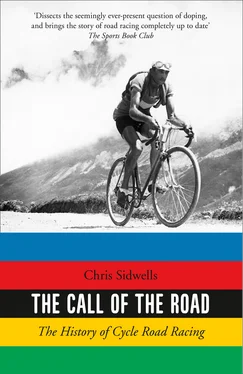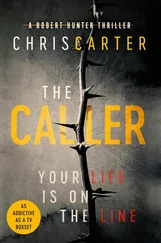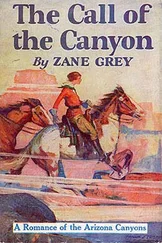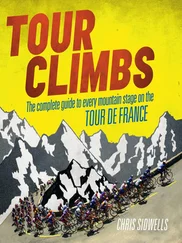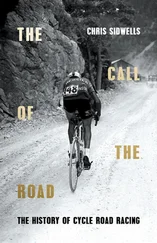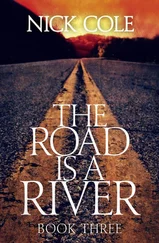Safety bicycles made cycling more popular because riders could place their feet on the floor while they were still seated on their bikes. This increased people’s confidence in them. Once under way, safety bicycles were easier to ride and control than penny-farthings, which made them much safer. Safety bicycles saw an increased uptake of cycling among women, and they played a big part in the emancipation movement, which is well documented in other books.
Road racers first saw the benefits of safety bicycles in 1877, the year that Starley and Sutton founded their company, when a Bordeaux bike mechanic called Georges Juzan covered 100 kilometres from Bordeaux to Libourne and back in 4 hours and 40 minutes. He rode a French version of the safety bicycle, proving they were ideal for covering long distances. And long-distance rides were how road racing became well established.
People understood long-distance rides by comparing them with their own experiences. One hundred miles back then was like a thousand now. The less well-off rarely travelled far, while for the rich a 100-mile carriage ride, even a rail journey of that length, was an undertaking. By helping cyclists cover long distances relatively quickly the safety bicycle was pivotal in the development of road racing in Europe.
British cyclists already did long rides on penny-farthings, and 100 miles became the mark of the serious British cyclist. It’s the same for cyclists today. One hundred miles is a challenge, but doable on a bike. The safety bicycle made 100 miles more accessible, and it provided a jump in performance for those who wanted it.
In 1878 Frank Dodds set a British 100-mile record on a penny-farthing of 7 hours, 18 minutes and 15 seconds. His time stood for six years before George Smith broke it riding a Kangaroo brand safety bicycle made by Hillman, Herbert and Cooper Ltd. The following year, on an improved version of the Kangaroo, Smith reduced his 100-mile record by nearly 6 minutes. Then, on 20 October 1885, Teddy Hale knocked almost half an hour off Smith’s record by riding 100 miles, again on a Kangaroo safety bicycle, in 6 hours, 39 minutes and 5 seconds.
That sealed the reputation of the ‘safety’ for speed on the road, and more manufacturers started making them. To show it was best, and hopefully sell more, manufacturers employed top racers to ride their bikes, sowing the seeds of professional road racing. In 1886 the Rudge Bicyclette became the pre-eminent safety bicycle, due mainly to the efforts of H. O. Duncan. He was a British racer who settled in France to compete in a growing programme of long road races there, against a growing number of top riders – men like De Civry, Medinger and the first big star of road racing, Charles Terront.
Terront was born in St Ouen in 1857 and took up cycling with his brother Jules. Success came almost immediately. Charles won eight races in 1876, including Paris–Pontoise, where despite being only 19 years old he beat a well-established star in Camille Thuillet, covering 62 kilometres in 2 hours and 53 minutes. Terront was described in Le Vélocipède Illustré as wearing ‘a spotted shirt, coloured breeches, black and white stockings and a magnificent red scarf flung over the top’.
Terront started racing on a Michaudine Vélocipède, similar to the one James Moore rode when he won the St Cloud race in 1868, and he graduated through the racing ranks by riding bigger and better penny-farthing bikes in road and in track races. But Terront switched to a safety bicycle as soon as they proved to be faster. His fame grew rapidly, and Terront’s racing career coincided with a huge growth in interest in cycling. Soon books were being written on the subject, and more cycling newspapers were founded. The distances of races grew rapidly too.
Cycling fans loved reading about their champions struggling through long, gruelling races, defying the odds, suffering setbacks and yet still coming through to glory. The fascination was such that newspapers begin to vie for who could organise the longest, most gruelling race. This gave rise to two incredible road races, which in different forms still exist today. They aren’t races now, but are long-distance challenge rides. They aren’t run every year; one was so long it was never made into an annual event.
The first race is Bordeaux–Paris, a 572-kilometre slog from the southwest of France to the nation’s capital, which was first held in 1891. It was a tough journey by train in those days, but unimaginable on a bike. And it was raced all in one go. The clock started in Bordeaux and it stopped in Paris; if riders stopped to eat or sleep the clock carried on, and the stationary period was included in their time. The roads were nothing like they are now, still stage-coach tracks. It sounds overwhelming, but there had already been a lot of long-distance track races, as well as the growing number on British roads.
Long-distance track cycling took a big jump in profile in 1878, when David Stanton, a gambler and a professional racer, bet that he could ride 1,000 miles inside six days. His attempt took place in the Agricultural Hall in London’s Islington, and the man who took his £100 bet was called Davis. A flat, oval track was marked out inside the hall, and Stanton rode his penny-farthing bike round and round it.
Planning on riding up to eighteen hours a day, Stanton completed 172 miles on the first day, and 160 miles on each subsequent day until he hit 1,000 miles with 27 minutes left of the sixth day. His total riding time was 73.5 hours, giving an average speed of 13.6 miles per hour.
Watching a man ride in circles on a big bike at thirteen and a bit miles per hour doesn’t sound like a spectacle now, but Londoners flocked to watch Stanton. Another six-day race was quickly organised in the Agricultural Hall, but with other competitors involved. They were cyclists and one horse rider, who won with 969 miles covered in six days. The first cyclist was 59 miles behind the horseman, and all the cyclists complained because the horseman was allowed to change mounts as each one grew tired.
The result stood, but no more horses were allowed in six-day races, while the Agricultural Hall became a regular venue. The next six-day race held there had ten cyclists competing, including Charles Terront, and a Sheffield rider called W. Cann, who won with 1,060.5 miles. His prize was £100, which is worth about £12,000 now. The public loved it, and in April 1879 a race billed as the six-day world championships was held at the same venue. George Waller of Newcastle won with 1,172 miles, including 261 miles ridden on the first day. Events came thick and fast after that. The six-day distance record grew and grew, and so did the riders’ fame. Soon there were six-day races in other British cities, then in Europe and in America, where it really took hold.
But while that was going on inside halls and stadiums, British long-distance road races were growing in number. Many were run over set distances, 50 and 100 miles, but in the most popular races competitors rose as far as they could in 12 or 24 hours.
George Pilkington Mills quickly became the man to beat in all long-distance road races. He started cycling aged 12, and in 1885, when he was still only 18, Mills set a new British 24-hour record of 259 miles in the Anfield Cycling Club race, riding a penny-farthing.
Mills won the Anfield 24-hour again the following year, then between 5 and 10 July 1886 he rode from Land’s End to John O’Groats, just over 900 miles in the days before bridges shortened it, in a new record of 5 days and 1 hour. Again, Mills rode a penny-farthing, but he was slowly changing his mind about what was the most efficient and fastest way to go racing. Mills set his last record on a penny-farthing on 5 August 1886, when he did 273 miles in 24 hours.
Читать дальше
